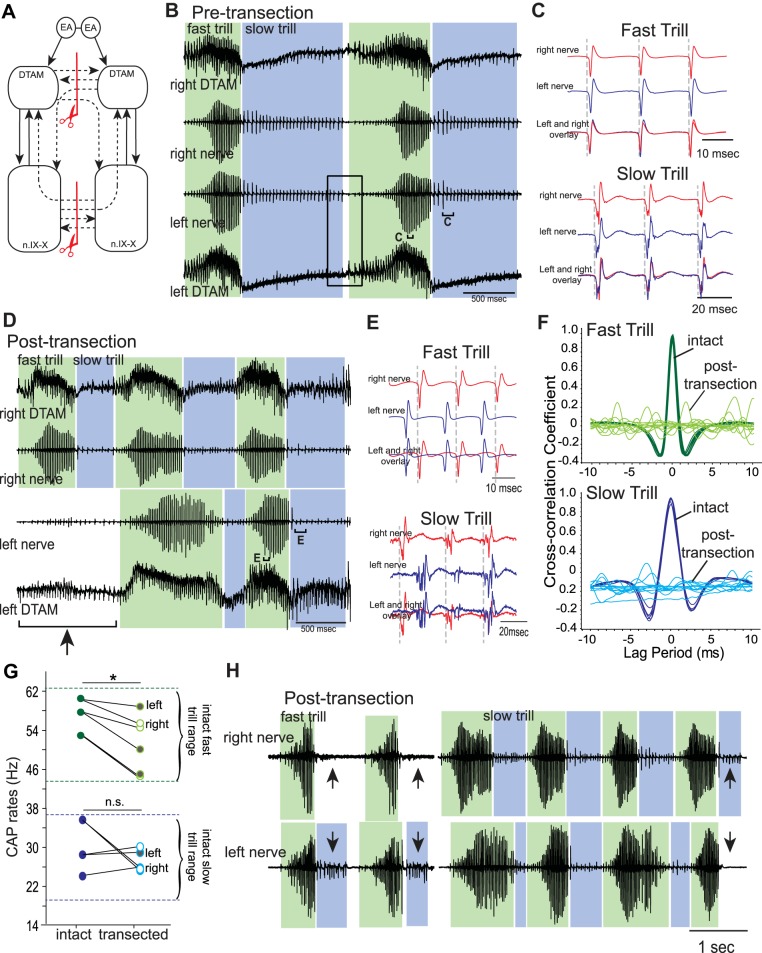Fig. 3.
Effects of sagittal transection of both anterior and posterior commissures on fictive vocalizations. A: diagram of the vocal pathways showing transections in red lines with scissors, transected projections in dotted arrows, and intact projections in solid arrows. B: example of the bilateral DTAM LFP recordings (top and bottom) and laryngeal nerve recordings (middle 2) obtained during fictive advertisement calls before transection. Green and blue frames indicate fast and slow trills, respectively, for all figures. Rectangle shows transition from slow trills to fast trills. Brackets with C are enlarged in C. C: enlarged sections of brackets labeled in B. Left (blue) and right (red) nerve recordings are shown during fast and slow trills with the overlay of nerve activities at the bottom. D: example of the bilateral DTAM LFP and laryngeal nerve recordings obtained from a brain in which both anterior and posterior commissures are sagitally transected. Bracket with arrow points to a fictive advertisement call produced only by the right nerve. Brackets with E are enlarged in E. E: enlarged sections from small brackets labeled in D. F: example of cross-correlation between left and right nerve recordings for fast and slow trills before (intact) and after (post-transection) transection. There is no obvious peak in correlation coefficient after the transection, indicating the asynchronous nature of the 2 nerve activities. G: mean fast and slow trill rates before and after transection from 3 brains. Because asynchronous fictive calls were recorded from the right and left nerve, the trill rates from the 2 sides were analyzed as independent rhythms after transection. Points connected by a line indicate mean fast and slow rate of 1 animal. Pairs of dotted green and blue lines indicate the range of fast and slow trill rates, respectively, obtained from intact brains. *P < 0.05, significant difference. H: example of fictive advertisement calls recorded from the right and left laryngeal nerves from brains with both anterior and posterior commissures sagitally transected. Note that the left and right calls are largely overlapping, but slow trills are sometimes missing on 1 nerve (arrows).

